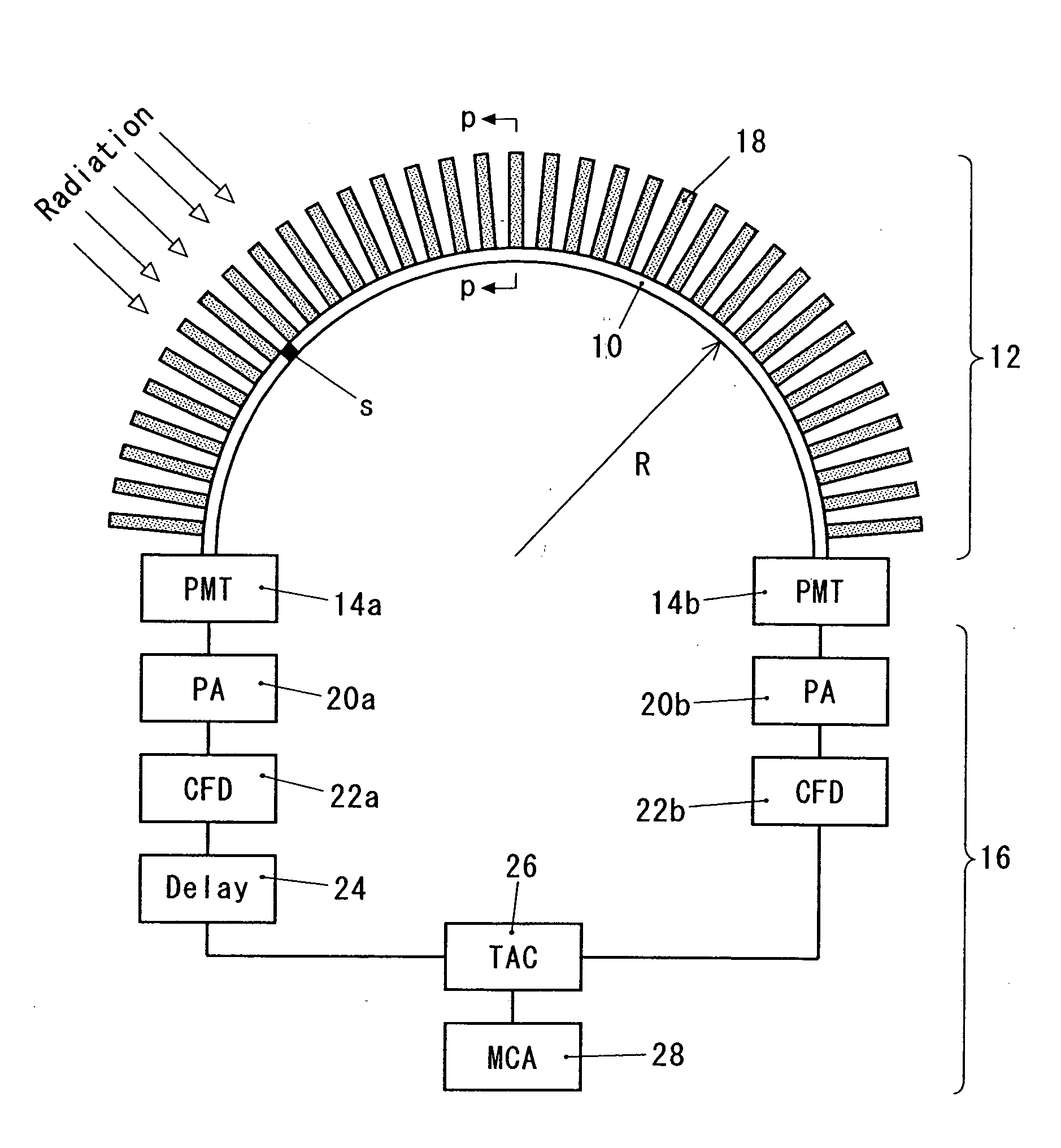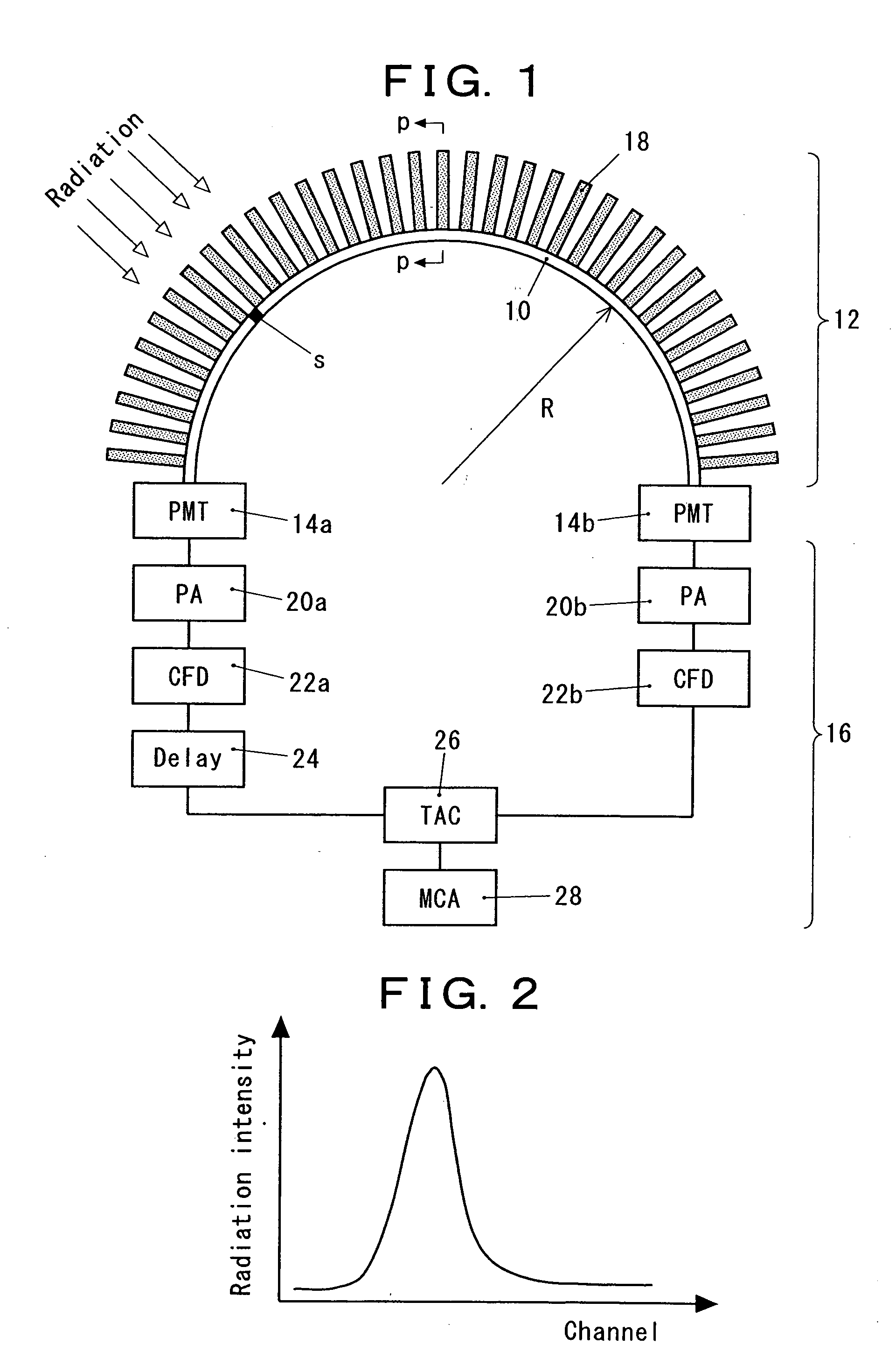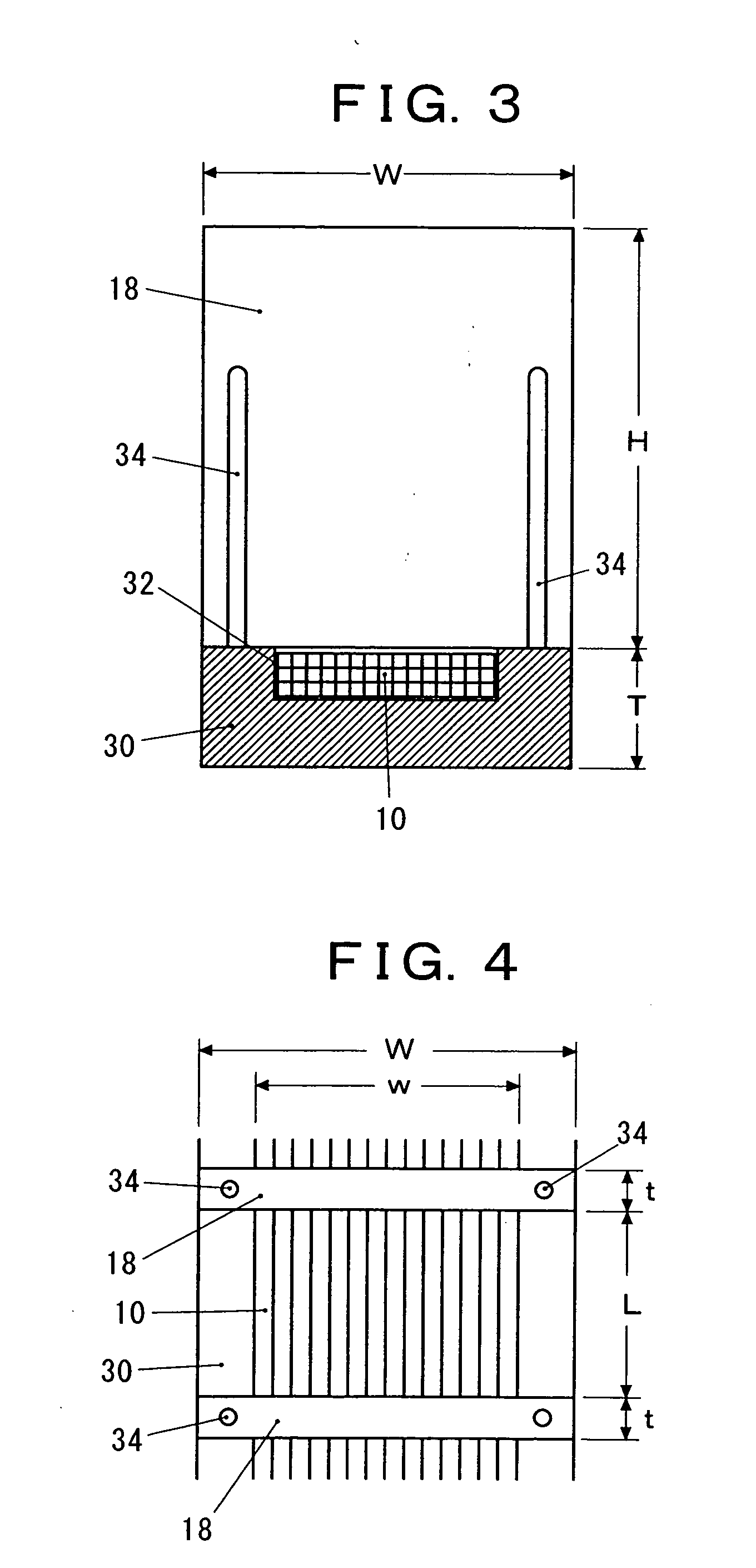Direction sensitive detector of radiation
a detector and direction technology, applied in the direction of x/gamma/cosmic radiation measurement, radiation particle tracking, instruments, etc., can solve the problems of large apparatus size, heavy weight, and inability to measure the incident direction of radiation incident from afar, and achieve the effect of light weight, simple shape and low cos
- Summary
- Abstract
- Description
- Claims
- Application Information
AI Technical Summary
Benefits of technology
Problems solved by technology
Method used
Image
Examples
Embodiment Construction
[0016] In the radiation detection system of the present invention, at least one scintillating optical fiber is arranged in a state of being curved in a circular arc shape, and on the outer periphery of the fiber, a large number of flat collimators are arranged in a radial pattern at nearly even intervals. Only the radiation which passes through any of the gaps between the adjacent collimators can reach the scintillating optical fiber to be converted into a light signal. The incident position of the radiation on the scintillating optical fiber is derived from the arrival time difference between the electric signals from the two light receiving elements, and thus the incident direction of the radiation is detected. By providing a constitution in which two sets, each including a scintillating optical fiber and a large number of flat collimators, are arranged so as to cross each other at right angles at the centers thereof, the radiations from almost all the directions can be detected. ...
PUM
 Login to View More
Login to View More Abstract
Description
Claims
Application Information
 Login to View More
Login to View More - R&D
- Intellectual Property
- Life Sciences
- Materials
- Tech Scout
- Unparalleled Data Quality
- Higher Quality Content
- 60% Fewer Hallucinations
Browse by: Latest US Patents, China's latest patents, Technical Efficacy Thesaurus, Application Domain, Technology Topic, Popular Technical Reports.
© 2025 PatSnap. All rights reserved.Legal|Privacy policy|Modern Slavery Act Transparency Statement|Sitemap|About US| Contact US: help@patsnap.com



